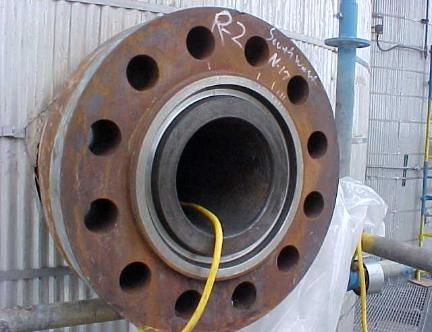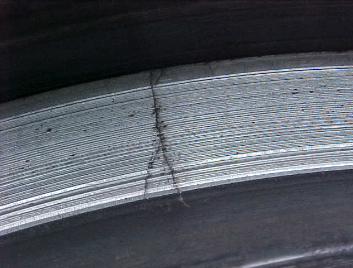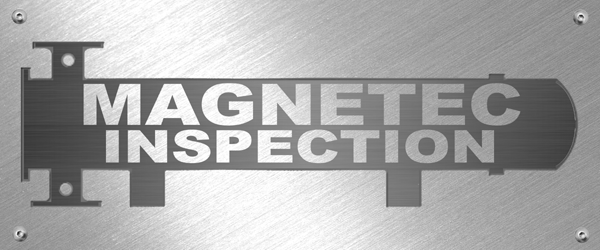

ACFM
ACFM

Site Map (Alphabetically)
Contact Info


| Crack Depth Measurement Using ACFM: |
AC field measurement (ACFM) is a recently developed electromagnetic technique which
calibration or cleaning to bare metal. ACFM is in effect a natural extension of Eddy Current
inspection techniques with the uniform injected current replaced by a uniform field induced
by a driver coil and the contact electrodes replaced by a set of orthogonal pick-up coils. The
measurements are performed by scanning the probe along the crack face.
calibration or cleaning to bare metal. ACFM is in effect a natural extension of Eddy Current
inspection techniques with the uniform injected current replaced by a uniform field induced
by a driver coil and the contact electrodes replaced by a set of orthogonal pick-up coils. The
measurements are performed by scanning the probe along the crack face.
The detection of surface and slightly sub-surface cracks by the Eddy Current
Technique has been successively utilized by many different industries (aerospace,
automotive, etc.) for over 20 years. The ability of detecting surface breaking cracks
basically involves passing a coil(s) of correct design and orientation over a defect where
the operating characteristics change and are presented to the equipment operator.
Technique has been successively utilized by many different industries (aerospace,
automotive, etc.) for over 20 years. The ability of detecting surface breaking cracks
basically involves passing a coil(s) of correct design and orientation over a defect where
the operating characteristics change and are presented to the equipment operator.
The Eddy Current response is based on the inter-action of the parent material and the
electrical condition of the probe as it passes material with no defect or in the presence
of a crack/corrosion.
electrical condition of the probe as it passes material with no defect or in the presence
of a crack/corrosion.
As the inspection probe encounters a defect the As
the inspection probe encounters a defect the both
amplitude and phase information which can be probe
delivers a response, a signal which contains
correlated to the defect in question. Interpretations
of these components provide the inspector with
information of the defect type, orientation, extent,
and depth.
the inspection probe encounters a defect the both
amplitude and phase information which can be probe
delivers a response, a signal which contains
correlated to the defect in question. Interpretations
of these components provide the inspector with
information of the defect type, orientation, extent,
and depth.
... using ACFM or Eddy Current techniques are based either on the use of
calibration cracks or on the estimation of crack depth from measurements of the
surface crack length assuming that the crack has a known aspect ratio. Both
approaches have limitations.
calibration cracks or on the estimation of crack depth from measurements of the
surface crack length assuming that the crack has a known aspect ratio. Both
approaches have limitations.
A major drawback in using the surface crack length (whether determined from the
depth is that the assumed length-to-depth ratio may be incorrect for the particular
crack under investigation. For example, the crack depth will be over estimated if
the crack has grown through coalescence of shallow cracks having multiple origins
rather than through the growth of a single crack, or may be underestimated if the
crack has initiated from an unexpected sub-surface defect. A further question is
what length-to-depth ratio should be assumed in the absence of any fractographic
or detailed fracture mechanics information. Such problems are less severe in the
case of quadrant or corner cracks, where the crack intersects two surfaces and
abnormal crack geometry can be more easily ruled out.
depth is that the assumed length-to-depth ratio may be incorrect for the particular
crack under investigation. For example, the crack depth will be over estimated if
the crack has grown through coalescence of shallow cracks having multiple origins
rather than through the growth of a single crack, or may be underestimated if the
crack has initiated from an unexpected sub-surface defect. A further question is
what length-to-depth ratio should be assumed in the absence of any fractographic
or detailed fracture mechanics information. Such problems are less severe in the
case of quadrant or corner cracks, where the crack intersects two surfaces and
abnormal crack geometry can be more easily ruled out.
In principle it is possible to estimate crack depth by comparing the eddy current signal from an unknown crack against data
from a calibration crack of the same surface length in the same component, presuming the depth of the calibration crack is
already known and that materials factors such as crack closure, crack branching and crack-face contact are equivalent. In
practice, such a library of calibration cracks is rarely available; however, defect response and signal presentation can be
utilized in conjunction to give fairly accurate crack configuration, depth and extension information.
from a calibration crack of the same surface length in the same component, presuming the depth of the calibration crack is
already known and that materials factors such as crack closure, crack branching and crack-face contact are equivalent. In
practice, such a library of calibration cracks is rarely available; however, defect response and signal presentation can be
utilized in conjunction to give fairly accurate crack configuration, depth and extension information.

| Eddy-Current Crack Measurement: |
| Current Methods for Practical Crack Sizing... |
| Nozzle #3 |
Crack Face
| Single Crack with Defined Branching |
| Angles Groove Surfaces |
Enlarged Photo of
Single Crack Face
Single Crack Face
| Branching and Inter-granular Attack |


| which can be utilized |
Multiple Crack Locations
and Inter-connection of
and Inter-connection of
| Groove Bottom |
| Groove Bottom |



| of ACFM & Eddy Current Test Techniques |
| THE FOLLOWING IS A DISCUSSION |
Magnetec Inspection Inc.
1159 East North St.,
Bradley, IL 60915
1159 East North St.,
Bradley, IL 60915
815 802-1363 T
815-802-1238 T
815-802-1250 F
815-802-1238 T
815-802-1250 F
ew@magnetec-inspection.com
admin@magnetec-inspection.com
admin@magnetec-inspection.com








